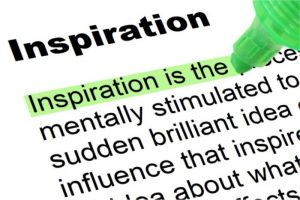

It can be helpful to set an intention for why you are working out to begin with. Is it to have more energy? Lose weight? Get stronger? Live longer? Improve your mood? When the going gets tough during your workout, you can then remind yourself of your original intention. Having an intention for your workout can also add meaning and focus to what you are doing.
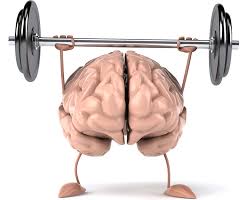
The heart is the most important muscle in your body. And just like any other muscle, your biceps for example, you need to work it to keep it strong!
Herein lays the reason to get up, move your body, and exercise for Heart Health benefits!
When your heart beats, it pumps blood around your body, transporting oxygen & energy where it is needed. Pressure from the heart beat is needed to make blood circulate – this pressure of blood flow causes resistance against the walls of your blood vessels and is considered your blood pressure!
A healthy heart pumps blood around easily, at a low pressure against vessel walls. Blood pressure readings at or below 120/80mmHg is considered good low blood pressure. High blood pressure means that your heart must pump harder and there is an increased resistance on the blood vessels. Having a blood pressure reading at or over 140/90mmHg puts you in a high risk category, and should be treated to lower those numbers.
Think of your blood vessels as a garden hose. If you block an end of the garden hose with your finger, the pressure of water inside the hose increases. This is similar to how blood pressure is affected by a blockage or narrowing of the blood vessel. If there is increased stiffness or narrowing of the blood vessel itself, there is a smaller “tube” for the heart to pump the same amount of blood through and an increase in pressure!
We need to be proactive in ways to maintain good heart & blood vessel health. Lifestyle plays a major role in managing your blood pressure. If you can successfully control your blood pressure with a healthy lifestyle, you might avoid, delay, or reduce the need for medication!
In this grand spectrum of “Healthy Living”, is exercise. Exercise, more specifically cardiovascular exercise, is known to improve the strength of the heart and decrease the stiffness of the vessels. A stronger heart can pump blood more efficiently! Cardiovascular exercise is considered any form of aerobic activity – walking, running, cycling, fitness classes, etc.
Canadian guidelines suggest at least 150 minutes (equates to 30 minutes 5 times per week) of aerobic exercise accumulated per week!
That being said, resistance training is also known to decrease blood pressure! Stronger postural muscles help in keeping blood flowing throughout the body.
So, what are you waiting for?! Keep it simple – even a 15 minute walk around the block twice in your work day will help decrease your blood pressure & heart disease risk!
Our breath is one of our most powerful tools for mindfulness, as well as for fitness. When you’re at peak exertion during a workout and think you can’t do it anymore, deepen and bring awareness to your breath. It will lessen your perception of work and help get you through. In terms of mindfulness, your breath is something that is always available to you and will always bring you into the present moment. During your workout, keep checking back in with your breath. Use it as a reminder to come back into your body if your mind wanders off.
People often refer to being “in the zone” when they work out. This is a sense of being completely present while slowing down the working of the mind. It’s about synchronizing body and mind and holding an open awareness—an awareness that is natural to us, but often gets clouded over by busy thoughts
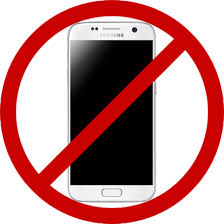
Practice Posture
Correct posture allows your body to function at its best during any given 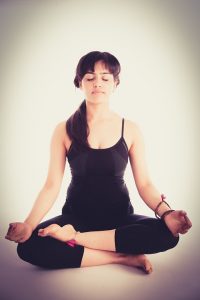
Everyone at some point or another has experienced 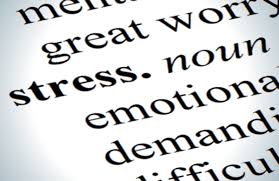
Why do we stress?
While we relate to the symptoms and triggers of stress, understanding what is happening on a physiological level is an important piece in better managing stress. Let’s take a closer look at the purpose of stress. Stress is a survival response. It is a programmed instinct to survive in the presence of danger. This is a valuable and necessary trait, but issues arise when this response is over productive, causing our health to suffer.
Our world has changed immensely over the course of human history. Our physical survival is not threatened the way it was thousands of years ago. However, our physiological response to stress remains the same.
Unfortunately, today’s high pace creates an onslaught of potential stress triggers. While we may consider stress a part of life, the fact remains that our physiology doesn’t understand the difference between some of these triggers and a life threatening situation.
The good news is we can use this knowledge as power and begin to take stress management more seriously. We can make stress reduction a priority and employ tools to act vs. react to situations. Stay tuned for much more on Mindfulness from Curtis Health!
by Caroline Cretien
Curtis Health

Recently, some companies have used coconut oil as the new superfood ingredient in their products as a selling point. But, how good is coconut oil for us?
Potential health hazards of coconut oil are that 92% of its chemical structure is classified as a saturated fat, even higher than butter, and could thus lead to elevated cholesterol levels.
Most of the health benefits attributed to coconut oil are associated with its high content of medium-chain fatty acids (MCFAs). The primary MCFA in coconut oil is lauric acid which mimics healthy unsaturated fats, such as olive oil and fish oil, by boosting good HDL cholesterol.
Reducing dietary fat has been a goal when it comes to reducing the risk of heart disease. However, this is changing and fat can no longer be viewed as the major culprit leading to cardiovascular disease.
Results of a meta-analysis published in the American Journal of Clinical Nutrition in 2010 showed that there is no significant evidence that dietary saturated fat increases risk of coronary heart disease. The analysis covered 21 studies involving 347,747 people.
A scientific report released in February 2015 by the American government’s influential Dietary Guidelines Advisory Committee stated that “available evidence shows no appreciable relationship between consumption of dietary cholesterol and serum cholesterol and that “dietary advice should put the emphasis on optimizing types of dietary fat and not reducing total fat.”
Interestingly, the Committee also reported that low-fat diets, where fats are often substituted by refined carbohydrates, were associated with high elevated cholesterol levels.
The fact is that coconut oil is very energy dense but, unlike other oils, it does not provide any additional vitamins or polyphenol antioxidant compounds like the ones found in olive oil.
The final verdict for now is that there is not enough scientific evidence to promote the use of coconut oil over other oils. Consuming fats in moderation and limiting consumption of saturated fat to 10 percent of total calories is our safest bet while keeping an eye on upcoming research.
Bettina M.
Registered Dietitian, Certified Health & Wellness Coach
Home | About Us | Meet the Team | How Can We Help? | Careers | Employers | Property Managers | Individuals | Contact Us | Privacy Policy
Copyright © 2024 Curtis Health
Head Office: 1098 Canyon BLVD, North Vancouver, BC V7R 2K4 Telephone: 604.921.2348
Kintec is offering all Curtis clients (including friends and family) expert shoe fitting to best suit your needs at a 15% discount on regular price footwear.